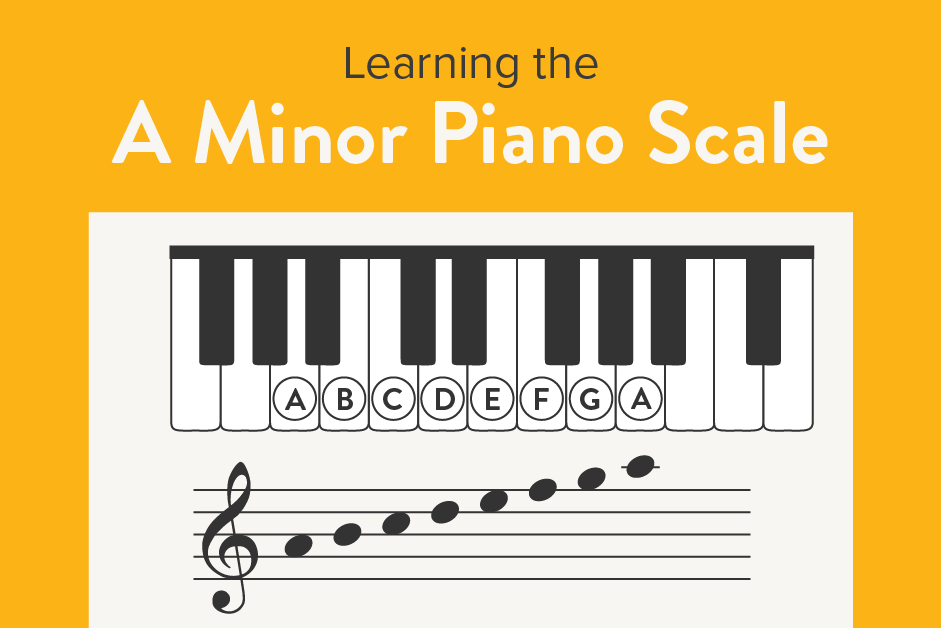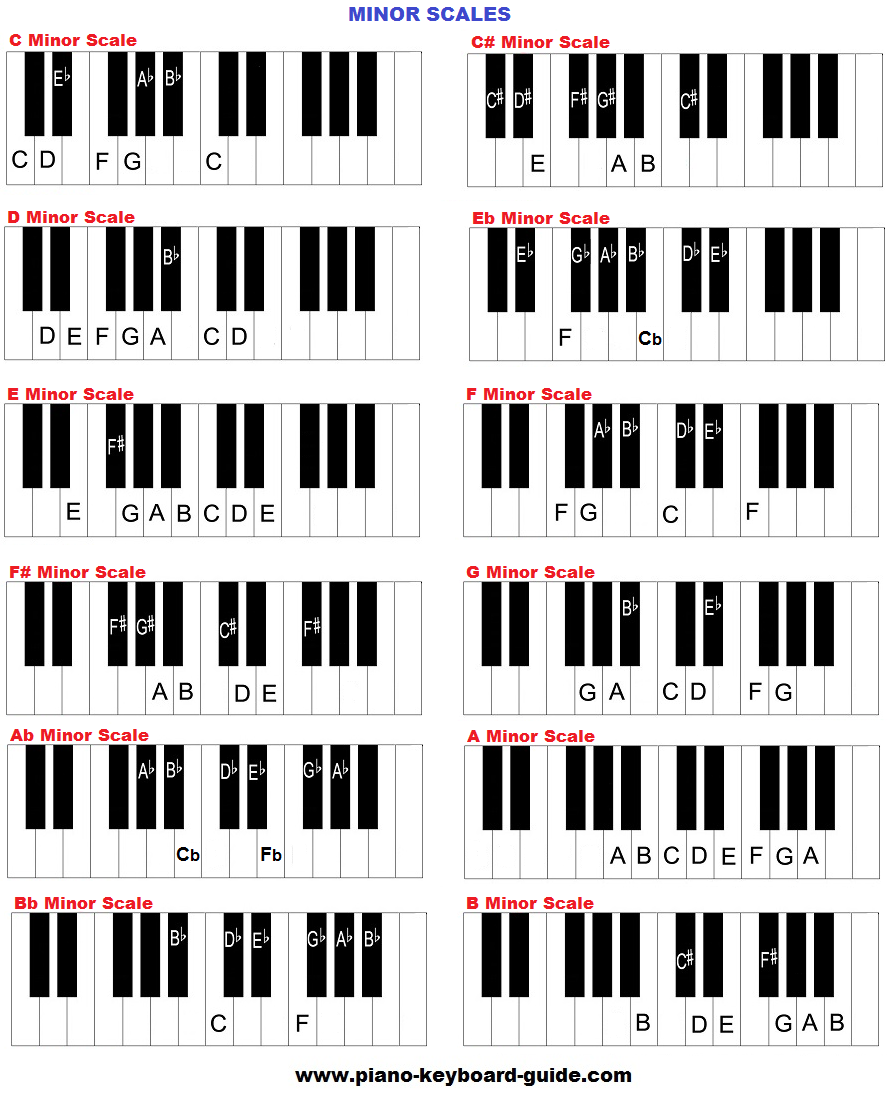Piano minor scales consist of a series of notes with specific intervals following a pattern of whole and half steps. They create a melancholic or somber tonality.
Piano students and enthusiasts often delve into minor scales to explore the emotional depth of music. These scales serve as a fundamental element in a wide range of musical genres, adding richness and variety to compositions. Understanding and mastering minor scales are essential for developing musical proficiency, as they equip players with the skills to perform and interpret an array of musical pieces.
Beginning with the natural minor scale, one can also venture into its variations like the harmonic and melodic minors, each offering a distinct sound. Practicing these scales enhances finger dexterity and helps one comprehend the structure of music, paving the way for artistic expression.

Credit: www.hoffmanacademy.com
Unlocking The Mystery Of Piano Minor Scales
Do you want to learn about piano minor scales? Let’s dive into the world of music where these scales create powerful emotions. They can seem complex, but with the right information, anyone can begin to understand their beauty and importance.
The Basics Of Minor Scales
A minor scale is a series of notes with a specific pattern. It differs from a major scale because of its sound, which often feels sad or serious. Each minor scale has seven notes. The pattern includes whole steps and half steps. On a piano, a half step is one key to the next with no keys in between. A whole step skips one key in between.
Here’s a simple way to play a minor scale:
- Start at the root note, the name of the scale.
- Move up a whole step.
- Next, take a half step.
- Two whole steps follow this.
- Finally, a half step, then two more whole steps.
This pattern, called the natural minor scale, is one of the basic forms the minor scales take.
Different Types Of Minor Keys
Piano minor scales are not all the same. There are three main types:
- Natural Minor: Uses the basic minor scale pattern.
- Harmonic Minor: Changes one note from the natural minor for a more dramatic sound.
- Melodic Minor: Changes when going up and down the scale to sound smoother.
Let’s play a C natural minor scale:
| Step | Note | Whole/Half |
|---|---|---|
| 1 | C | Root |
| 2 | D | Whole |
| 3 | E♭ | Half |
| 4 | F | Whole |
| 5 | G | Whole |
| 6 | A♭ | Half |
| 7 | B♭ | Whole |
| 8 | C | Whole |
For the harmonic minor scale, raise the seventh note a half step. For the melodic minor scale, raise the sixth and seventh notes when going up and return them when going down.

Credit: piano-music-theory.com
The Natural Minor Scale: A Musical Foundation
The natural minor scale is key to creating emotional music. It gives songs a sad or mysterious feel. This scale is found in many genres and styles. Its pattern is easy to learn. Musicians often start with it when learning minor music.
Constructing A Natural Minor Scale
To build a natural minor scale, follow a simple pattern. Start with any note. Use this sequence: whole, half, whole, whole, half, whole, whole. ‘Whole’ means skip one key; ‘half’ means go to the next key.
Let’s break down the steps:
- Choose a starting note – This is the ‘root’ of the scale.
- Apply the pattern – Use the whole and half steps from the root.
- Complete the octave – Finish when you reach the starting note higher up.
Here is the A natural minor scale as an example:
| Note | Whole/Half |
|---|---|
| A | Root |
| B | Whole |
| C | Half |
| D | Whole |
| E | Whole |
| F | Half |
| G | Whole |
| A | Whole |
Examples Of Natural Minor In Music
Natural minor scales are in many famous songs. Below are some popular examples:
- “Smells Like Teen Spirit” by Nirvana uses the A natural minor scale.
- “Stairway to Heaven” by Led Zeppelin moves through A natural minor.
- “Nothing Else Matters” by Metallica starts with E natural minor.
These songs show the scale’s wide use. Many other songs also include natural minor scales. They can make music sound more diverse and interesting.
Harmonic Minor Scale: The Spice Of Tension
Imagine a taste with just the right amount of spice. In music, that’s the harmonic minor scale. It adds tension and drama to songs. The unique sound grabs our hearts, pulling us into the story of the music.
Raising The Seventh Note
Every scale tells a story. In the harmonic minor scale, the story takes a twist. By raising the seventh note, a sharp turn awakens our senses. This simple change creates a new path.
- A becomes A# in the key of B minor.
- G turns into G# in the key of A minor.
The Emotional Impact Of Harmonic Minor
Music speaks to us in emotions. The harmonic minor scale creates a blend of feelings. It’s this mix that makes music memorable. The harmonic minor’s raised seventh evokes sadness touched with hope, and danger paired with excitement.
The raised seventh sets the stage for emotional storytelling. Songs build up and release tension, like a thrilling book. Composers use harmonic minor to paint vivid emotional pictures.
Melodic Minor Scale: A Dual Identity
In the world of music, the Melodic Minor Scale holds a special place due to its unique characteristic. Unlike other minor scales, the melodic minor scale has a different pattern when played ascending versus when it’s descending. This quirky trait endows it with the name “The Dual Identity Scale”. Musicians love this scale for its versatility and emotive range.
Ascending Versus Descending Form
Ascending, the melodic minor scale showcases a cheerful demeanor. Here’s the magic: it starts like any minor scale but leaps into a major scale feel towards the top.
Descending, it reverts to a pure minor form. This gives it a classic minor scale’s sorrowful touch.
| Note Position | Ascending Form | Descending Form |
|---|---|---|
| 1 (Root) | Unchanged | Unchanged |
| 2 | Unchanged | Unchanged |
| 3 | Lowered | Lowered |
| 4 | Unchanged | Unchanged |
| 5 | Unchanged | Unchanged |
| 6 | Raised | Lowered |
| 7 | Raised | Lowered |
The Role Of Melodic Minor In Jazz
Jazz musicians often turn to the melodic minor scale to add color to their compositions.
Its ability to toggle between moods makes it perfect for improvisation.
- Ascending form brings in a hopeful twist.
- Descending form creates a sense of resolution.
Let’s explore some key features that make it a jazz favorite.
- Versatile soloing options over complex chords.
- Smooth transition between major and minor tonalities.
- Richer harmonic possibilities for chord progressions.
Practical Applications And Techniques
Mastering piano minor scales is vital for both performance and composition. It unlocks a world of emotion in music. This section explores practical ways to use these scales. Readers will grasp key techniques and patterns. They will learn to weave minor scales into their music seamlessly.
Fingering Patterns For Minor Scales
Effective fingering is crucial for playing minor scales smoothly. Each scale has a unique finger pattern. These patterns ensure speed and accuracy. Let’s look at the pattern for the A minor scale:
- Right Hand: 1-2-3-1-2-3-4-5
- Left Hand: 5-4-3-2-1-3-2-1
Consistent practice of these patterns develops muscle memory. Muscle memory lets pianists play without hesitation. A table of common patterns can assist in daily practice:
| Scale | Right Hand Fingering | Left Hand Fingering |
|---|---|---|
| A Minor | 1-2-3-1-2-3-4-5 | 5-4-3-2-1-3-2-1 |
| E Minor | 1-2-3-1-2-3-4-5 | 5-4-3-2-1-2-3-4 |
| D Minor | 1-2-3-1-2-3-4-5 | 5-4-3-2-1-3-1-2 |
Practice these patterns regularly. They will become second nature.
Incorporating Minor Scales Into Music Composition
Minor scales add depth to compositions. They express a range of emotions. From sorrow to tension, minor scales are powerful. Composers use them to set a mood. Here are steps to weave them into music:
- Start with a chord progression in a minor key.
- Build a melody using the minor scale notes.
- Use the natural, harmonic, and melodic minor variations for diversity.
- Mix in major chords for contrast if desired.
- Experiment with rhythm and tempo for different feels.
Understanding the emotional impact is key. This drives the use of minor scales in music. Experimentation leads to unique compositions. Incorporating minor scales becomes an art. It enriches musical storytelling.
Listening Guide To Minor Scales
Welcome to your Listening Guide to Minor Scales! The minor scale is a staple in music, creating a sound that’s often perceived as somber or introspective. Through this guide, you’ll learn to tune your ears to the unique qualities of minor scales. You’ll discover how to recognize them in music and explore famous pieces that showcase their beauty and depth.
Recognizing Minor Scales In Songs
Identifying minor scales can seem daunting, but with a bit of practice, you can learn to pick out their distinctive sound. Minor scales have a specific pattern of intervals that set them apart. Listen for a lower third note—this often gives off a sad or serious vibe compared to the happy or bright sound of a major scale’s third note. You can also listen for the following features:
- Step pattern: Whole, half, whole, whole, half, whole, whole.
- Key signature: Often includes flats or sharps specific to minor keys.
- Melodic feel: Songs may have a haunting or melancholy melody.
Famous Pieces That Utilize Minor Scales
Many classical and modern pieces utilize minor scales to evoke deep emotions. Here’s a selection of famous works:
| Composer / Artist | Piece / Song | Minor Key |
|---|---|---|
| F. Chopin | Nocturne Op. 9 No. 2 | E-flat Minor |
| L.V. Beethoven | Moonlight Sonata | C-sharp Minor |
| Radiohead | Creep | G Minor |
Each of these pieces uses the minor scale to create an unforgettable musical experience. By listening to how composers and artists utilize minor scales, you’ll gain a deeper appreciation for the scale’s role in music production.

Credit: www.piano-keyboard-guide.com
Can I Learn Piano Minor Scales Quickly?
Yes, you can learn piano minor scales quickly with the right techniques. By utilizing fast piano scales techniques, such as practicing hand positions and using visualization methods, you can improve your ability to play minor scales with speed and accuracy. Consistent practice and focused training will help you achieve your goal.
Frequently Asked Questions Of What Are Piano Minor Scale
What Are The 12 Minor Scale?
The 12 minor scales consist of natural, harmonic, and melodic forms in each key: C, C#, D, D#, E, F, F#, G, G#, A, A#, and B minor. Each key has unique pitch steps and sound characteristics.
What Is A Minor Scale?
A minor scale is a sequence of notes with a distinct pattern of whole and half steps, creating a melancholic or somber musical mood.
What Is The Difference Between A Major And A Minor Scale?
Major scales have a brighter, happier sound, with a whole-half-whole-whole-half-whole-whole note pattern. Minor scales sound sadder or more serious, following a whole-half-whole-whole-half-whole-and-a-half-whole pattern.
What Notes Are In A Minor Scale?
A minor scale consists of seven notes: the root, major second, minor third, perfect fourth, perfect fifth, minor sixth, and minor seventh.
Conclusion
Understanding piano minor scales is essential for any aspiring musician. These scales add depth and emotion to compositions, unlocking a new realm of expression. Practice them diligently to master the subtleties of music. Embrace their complexity, and watch your piano skills flourish.
Keep exploring, and let the scales guide your musical journey.
